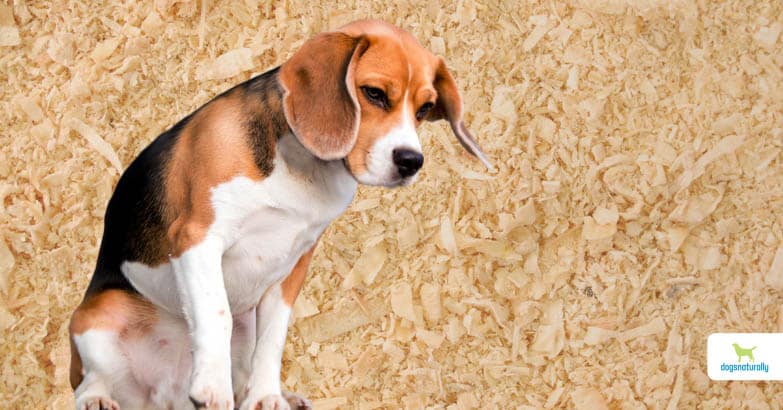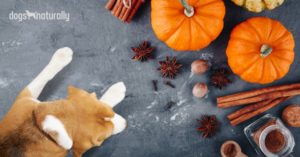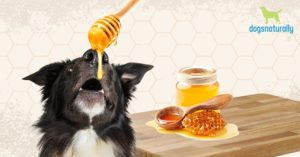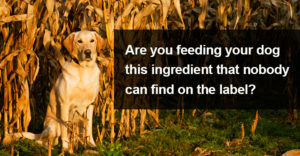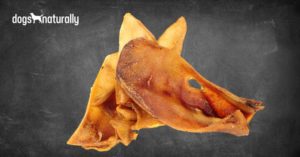Cellulose or powdered cellulose is a type of plant fiber or wood pulp used in dog food. Cellulose in dog food is not a great addition to your dog’s diet.
Let’s start by looking at fiber and then delve into the drawbacks of cellulose in dog food as well as other cheap fiber fillers.
Fiber In Dog Food
Fiber is a complex carbohydrate that is resistant to dogs’ digestive enzymes. There are several sources of fiber commonly used in pet food. These include beet pulp, bran, tomato pomace, buckwheat and other grain hulls, psyllium, fruit pectin, guar gum and other gums, flaxseed, and powdered cellulose.
Fiber moderates how fast food moves through the digestive system. That makes it useful for regulating the bowels. When your dog is constipated, it can speed up digestion. It also does the opposite. It can slow down rapid digestion that leads to diarrhea. It’s better at speeding digestion than slowing it.
Do Dogs Need Fiber?
Actually, yes … and no. Dogs have no physiologic need for fiber. The natural canine diet contains little, if any. However, fiber can be beneficial. Dogs need soluble fiber in their diets, which is fermented by gut bacteria to support gut health and strengthen the immune system.
Fiber can help manage weight, help control diabetes and improve anal gland issues.
Preferable sources of fiber are broccoli, microgreens, berries and fruits, kelp, mushrooms, leafy greens and pumpkin. Then dogs will get the benefits of the micronutrients within these foods.
When dogs eat processed foods, fiber can be very beneficial. That’s because some fibers help break down food and make vitamins. But when fiber like powdered cellulose is added to dog food there are no nutritional benefits. It increases stool volume … but this may not always be helpful or desirable.
RELATED: Here’s why your dog needs soluble fiber in his diet …
There are several variations of fiber used as cheap fillers in dog food.
Types Of Fiber In Dog Food
“Crude fiber” is the term used on pet food labels. It’s measured by a standardized testing assay. However, it isn’t a particularly accurate method. And it’s likely that pet foods contain more fiber than the label reveals.
There have been many efforts to create a classification system for fiber: soluble, fermentable, functional, and viscous. Any fiber may fall into multiple categories. That means having categories isn’t especially helpful.
Two fibers that are widely used in pet food have been particularly vilified: cellulose and beet pulp. And with good reason that I’ll discuss shortly. Other common fibers added to dog food include brewers rice, tomato pomace and various soy by-products.
The common denominator is that they all lack nutritional value despite what manufacturers tell you in their marketing. Another thing they have in common is they don’t add calories to your dog’s food. That’s why you’ll often see these ingredients in weight-loss and grain-free foods. They give your dog a feeling of fullness when he eats … and then he just eliminates them.
Here’s a closer look at cellulose in dog food.
Powdered Cellulose In Dog Food
Powdered cellulose in dog food is an artificial ingredient used as a cheap filler. It’s defined as “purified, mechanically disintegrated cellulose . . . from fibrous plant materials.” I fondly refer to it as “sawdust,” which isn’t far from reality.
Cellulose comes from wood pulp, such as paper or cotton. The wood is baked down to remove water. This creates a dehydrated powder. And even if it’s listed on the ingredient panel as natural or organic, it’s still just sawdust.
Cellulose is insoluble and non-fermentable, and doesn’t break down in water or digest in your dog. And it doesn’t ferment to become a prebiotic to nurture beneficial bacteria in the gut. When your dog consumes cellulose, it absorbs water as it passes through his digestive tract bulking up his stool. So your dog also needs much more water than if he were eating a raw diet with plenty of moisture.
It is one of the least functional … but cheapest … sources of fiber used to increase dog food content. It’s approved by the FDA for use in dog food, but that doesn’t mean it’s healthy or beneficial for your dog.
You won’t know the source of cellulose in dog food. At least if you see beet pulp or tomato pomace on your ingredient label, you know the source of the fiber. A much better option is for your dog to obtain fiber as a natural cellulose from vegetables in his diet, even a processed diet. Then the ingredient list won’t even need to list cellulose … you’ll know there’s naturally derived cellulose from the vegetables in the food.
Let’s look at some other fibers and fillers.
Fiber Fillers In Dog Food
Filler is just as it sounds … it’s added to dog food to add content to the bag of dog food. For your dog, it increases bulk and gives him a feeling of fullness … without any nutritional benefit. Here are some fillers that you’ll see.
Beet Pulp In Dog Food
Beet pulp comes from sugar beets. But your dog isn’t getting any of the micronutrients. That’s because beet pulp is a leftover of beet processing. It contains little or no sugar … and no other nutrients either. Sugar beets in the US are almost all genetically modified. And glyphosate residue is a real risk of beet pulp. There are hysterical internet myths about it as well (causes bloat, causes diabetes) but those aren’t true.
Tomato Pomace In Dog Food
Tomatoes used are non-organic, so they’re highly sprayed with pesticides and herbicides, which are concentrated in the tomato skins. Tomato pomace is a fancy name for the waste left over from tomato processing. It’s made from seeds, pulp and skins … where you’ll find residues from spraying. Tomato pomace is preserved by being sun-dried, mechanically dried or preserved by chemicals that are toxic and carcinogenic. But you won’t know which method is used. It’s further processed when added to pet foods, thus destroying any available nutrients.
Brewers Rice In Dog Food
These are grain fragment leftovers after whole rice is milled. It’s a cheap filler without any nutrients. Your dog will feel fuller, and you’ll notice he poops more.
Soy By-Products in Dog Food
Using soy by-products is a sneaky way of increasing the protein content of dog food without adding meat. But soy by-products and soy itself are poor sources of amino acids that your dog can’t digest. Soy is a high allergen food, and it’s genetically modified. Plus, at harvest, it’s sprayed with toxic glyphosate as a desiccant. If you remove soy oil and meat you’re left with nutrient-free soy grits and soy hulls. And that’s what they put in the dog food.
Read your dog food ingredient labels. It’s best to avoid nutrient deficient foods like beet pulp and cellulose in dog food, and the others I’ve listed. If you choose to feed processed food, choose products with real food ingredients containing their own natural fiber. Then your dog gets other nutritional benefits, too. Or feed a whole food, raw diet without fillers … and fiber derived from its own ingredients.

